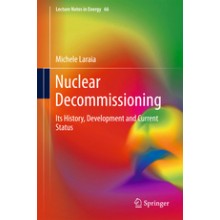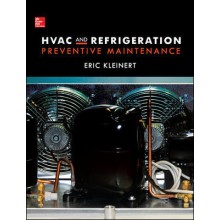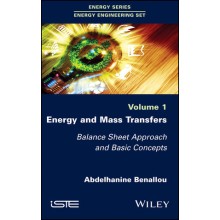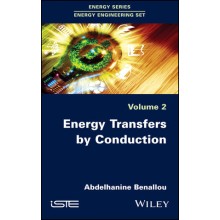Energy Transfers by Convection Volume - 3: 2019
Quantity:
-
Add to Compare
Whether in a solar thermal power plant or at the heart of a nuclear reactor, convection is an important mode of energy transfer. This mode is unique; it obeys specific rules and correlations that constitute one of the bases of equipment-sizing equations.
In addition to standard aspects of convention, this book examines transfers at very high temperatures where, in order to ensure the efficient transfer of energy for industrial applications, it is becoming necessary to use particular heat carriers, such as molten salts, liquid metals or nanofluids. With modern technologies, these situations are becoming more frequent, requiring appropriate consideration in design calculations.
Energy Transfers by Convection also studies the sizing of electronic heat sinks used to ensure the dissipation of heat and thus the optimal operation of circuit boards used in telecommunications, audio equipment, avionics and computers.
Preface xi
Introduction xiii
Chapter 1 Methods for Determining Convection Heat Transfer Coefficients 1
1.1 Introduction 1
1.2 Characterizing the motion of a fluid 1
1.3 Transfer coefficients and flow regimes 3
1.4 Using dimensional analysis 4
1.4.1 Dimensionless numbers used in convection 4
1.4.2 Dimensional analysis applications in convection 7
1.5 Using correlations to calculate h 12
1.5.1 Correlations for flows in forced convection 14
1.5.2 Correlations for flows in natural convection 14
Chapter 2 Forced Convection Inside Cylindrical Pipes 15
2.1 Introduction 15
2.2 Correlations in laminar flow 15
2.2.1 Reminders regarding laminar-flow characteristics inside a pipe 16
2.2.2 Differential energy balance 17
2.2.3 Illustration: transportation of phosphate slurry in a cylindrical pipe 22
2.2.4 Correlations for laminar flow at pipe entrance 25
2.3 Correlations in transition zone 30
2.4 Correlations in turbulent flow 30
2.4.1 Dittus–Boelter–McAdams relation. 31
2.4.2 Colburn–Seider–Tate relation 32
2.4.3 Illustration: improving transfer by switching to turbulent flow 33
2.4.4 Specific correlations in turbulent flow 34
2.4.5 Illustration: industrial-grade cylindrical pipe 38
2.5 Dimensional correlations for air and water 39
Chapter 3 Forced Convection Inside Non-Cylindrical Pipes 43
3.1 Introduction 43
3.2 Concept of hydraulic diameter. 43
3.3 Hydraulic Nusselt and Reynolds numbers 45
3.4 Correlations in established laminar flow 45
3.4.1 Pipes with rectangular or square cross-sections in laminar flow 45
3.4.2 Pipes presenting an elliptical cross-section in laminar flow 46
3.4.3 Pipes presenting a triangular cross-section in laminar flow 47
3.4.4 Illustration: air-conditioning duct design 48
3.4.5 Annular pipes with laminar flow 51
3.5 Correlations in turbulent flow for non-cylindrical pipes 57
3.5.1 Pipes with rectangular or square cross-sections in turbulent flow 57
3.5.2 Pipes with elliptical or triangular cross-sections in turbulent flow 58
3.5.3 Illustration: design imposes the flow regime 60
3.5.4 Annular pipes in turbulent flow 62
Chapter 4 Forced Convection Outside Pipes or Around Objects 69
4.1 Introduction 69
4.2 Flow outside a cylindrical pipe 70
4.3 Correlations for the stagnation region 71
4.4 Correlations beyond the stagnation zone 72
4.5 Forced convection outside non-cylindrical pipes 72
4.5.1 Pipes with a square cross-section area 72
4.5.2 Pipes presenting an elliptical cross-section area 74
4.5.3 Pipes presenting a hexagonal cross-section area 74
4.6 Forced convection above a horizontal plate 76
4.6.1 Plate at constant temperature 76
4.6.2 Plate with constant flow density 77
4.7 Forced convection around non-cylindrical objects 79
4.7.1 Forced convection around a plane parallel to the flow 79
4.7.2 Forced convection around a sphere 80
4.8 Convective transfers between falling films and pipes 80
4.8.1 Vertical tubes 81
4.8.2 Horizontal tubes 82
4.9 Forced convection in coiled pipes 83
4.9.1 Convection heat transfer coefficient inside the coil 84
4.9.2 Convection heat transfer coefficient with the outer wall of the coil 85
4.9.3 Convection heat transfer coefficient between the fluid and the tank 87
Chapter 5 Natural Convection Heat Transfer 89
5.1 Introduction 89
5.2 Characterizing the motion of natural convection 89
5.3 Correlations in natural convection 91
5.4 Vertical plates subject to natural convection 92
5.5 Inclined plates subject to natural convection 94
5.6 Horizontal plates subject to natural convection 95
5.6.1 Case of underfloor heating 95
5.6.2 Ceiling cooling systems 96
5.7 Vertical cylinders subject to natural convection 97
5.8 Horizontal cylinders subject to natural convection 98
5.9 Spheres subject to natural convection 99
5.10 Vertical conical surfaces subject to natural convection 100
5.11 Any surface subject to natural convection 101
5.12 Chambers limited by parallel surfaces 101
5.12.1 Correlation of Hollands et al. for horizontal chambers 103
5.12.2 Correlation of El-Sherbiny et al. for vertical chambers 104
5.13 Inclined-plane chambers 105
5.13.1 For large aspect ratios and low-to-moderate inclinations 105
5.13.2 For lower aspect ratios and inclinations below the critical inclination 106
5.13.3 For lower aspect ratios and inclinations greater than the critical inclination 106
5.14 Chambers limited by two concentric cylinders 107
5.15 Chambers limited by two concentric spheres 109
5.16 Simplified correlations for natural convection in air 111
5.16.1 Vertical cylinder or plane under natural convection in air 111
5.16.2 Horizontal cylinder or plane under natural convection in air. 111
5.16.3 Horizontal plane under natural convection in air 112
5.16.4 Sphere under natural convection in air 112
5.16.5 Circuit boards under natural convection in air 112
5.16.6 Electronic components or cables under natural convection in air 113
5.17 Finned surfaces: heat sinks in electronic systems 113
5.17.1 Dissipation systems 114
5.17.2 Thermal resistance of a heat sink 115
5.18 Optimizing the thermal resistance of a heat sink 117
5.18.1 Determining the heat-sink/air heat transfer coefficient 119
5.18.2 Calculating the optimum spacing between fins 120
5.18.3 Practical expression 120
5.18.4 Calculating the evacuated heat flux 120
5.18.5 Implementation algorithm 120
5.18.6 Illustration: optimum design of a heat sink 122
5.19 Optimum circuit-board assembly 125
5.19.1 Calculating the optimum spacing between electronic boards 126
5.19.2 Heat transfer coefficient between electronic boards and air 126
5.19.3 Calculating the evacuated heat flux 127
5.19.4 Implementation algorithm 127
5.19.5 Illustration: optimum evacuation of heat generated by electronic boards 129
5.20 Superimposed forced and natural convections 130
5.20.1 Vertical-tube scenario: Martinelli-Boelter correlation 131
5.20.2 Horizontal-tube scenario: Proctor-Eubank correlation 132
5.20.3 Cylinders, disks or spheres in rotation 133
Chapter 6 Convection in Nanofluids, Liquid Metals and Molten Salts 137
6.1 Introduction 137
6.2 Transfers in nanofluids 138
6.2.1 Physical data 139
6.2.2 Nanofluids circulating in tubes 142
6.2.3 Nanofluids circulating within annular pipes 144
6.2.4 Superposition of natural and forced convections in nanofluids 145
6.3 Transfers in liquid metals 146
6.3.1 Physical data 146
6.3.2 Liquid metals in forced convection within cylindrical pipes 147
6.3.3 Liquid metals in forced convection within an annular space 147
6.3.4 Liquid metals flowing along a horizontal plane 149
6.3.5 Liquid metals in forced convection between two parallel planes 149
6.3.6 Liquid metals subject to natural convection 149
6.4 Transfers in molten salts 150
6.4.1 Physical data 150
6.4.2 Molten salts under forced convection in laminar flow within cylindrical pipes 151
6.4.3 Molten salts under forced convection in the transition zone within cylindrical pipes 152
6.4.4 Molten salts under forced convection in turbulent flow within cylindrical pipes 153
6.5 Reading: Eugène Péclet and Lord Rayleigh 154
6.5.1 Eugène Péclet 154
6.5.2 Lord Rayleigh 155
Chapter 7 Exercises and Solutions 157
Appendices 321
Appendix 1 Database 323
Appendix 2 Regressions 385
Bibliography 389
Index 403
Write a review
Your Name:Your Review: Note: HTML is not translated!
Rating: Bad Good
Enter the code in the box below:
Copyright © 2014 Engineering Standards Bureau. All Rights Reserved.
Developed By Zoom Into Web







